Glossary 1 Multiplication Properties Incorrect Try Again or
The leap from learning subtraction and add-on tolearning multiplicationis i of the nearly daunting tasks students will confront at schoolhouse.
And it's not merely students who have problem with the bailiwick.
When instruction multiplication, educators frequently outset with the incorrect concepts or piece of work through lessons too chop-chop. This can discourage and intimidate students, ultimately dissentious learning outcomes.
Thankfully, there are known strategies to avoid these obstacles.
Use the guide beneath to meet how you can make teaching and learning multiplication like shooting fish in a barrel in vi simple steps that will appoint and resonate with students.
Section A: The six step guide to pedagogy multiplication
1. Relate multiplication to addition
Avert starting with memorization. Students typically struggle to memorize multiplication facts on the first attempt, and this tin lead to a fear of the multiplication tabular array.
The simplest way to brainstorm teaching multiplication is to ballast the concept in terms of its relation to addition -- an operation your students should already be comfortable with.
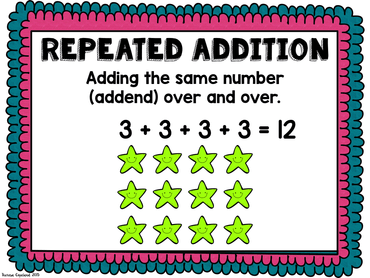
Earlier moving on, ensure your students grasp the first pillar of multiplication: that it is only repeated improver.
Use relatable examples, similar the 1 above, to contextualize this fact.
It will help to write out examples so students can visualize the idea:
2 x 2 is the aforementioned as2 + ii
or
three ten 4 is the same equally4 + four + 4
two. Offset with the multiples of zero and one
Multiplying by cypher: The naught property
Highlight to your class that adding nada to a number has no upshot on its identity:
northward + 0 = due north
Next, explicate that in multiplication, whatsoever number multiplied by zero is besides aught:
due north ten 0 = 0
Encourage students to notice examples of the nil property in the room. For example, a classroom that has 25 chairs with zero monkeys sitting on each 1 means that at that place are no monkeys in the classroom.
Optionally, one amusing example of a fun math activeness to entertain your students involves thinking of funny examples of this property, like 0 x one 1000000 = 0 ... or ...0 x ham sandwich = 0.
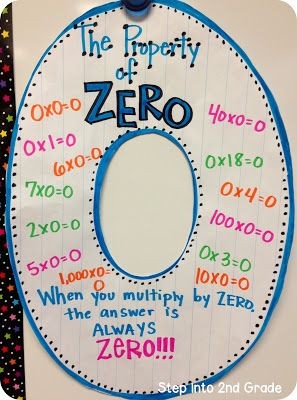
Image source: Pace Into second Grade
Multiplying by one: The identity property
In brusque, the identity property states that the product of a given number and i is that number itself: n 10 1 = n.
Merely like with the zippo property, highlight to your class that multiplying a number past one results in the aforementioned value.
To ground the property in a existent-life context, encourage your class to recollect of instances of the identity property in the classroom.
For case,
- I group of eight desks is 8 desks
- A single row on the calendar showing seven days is seven days
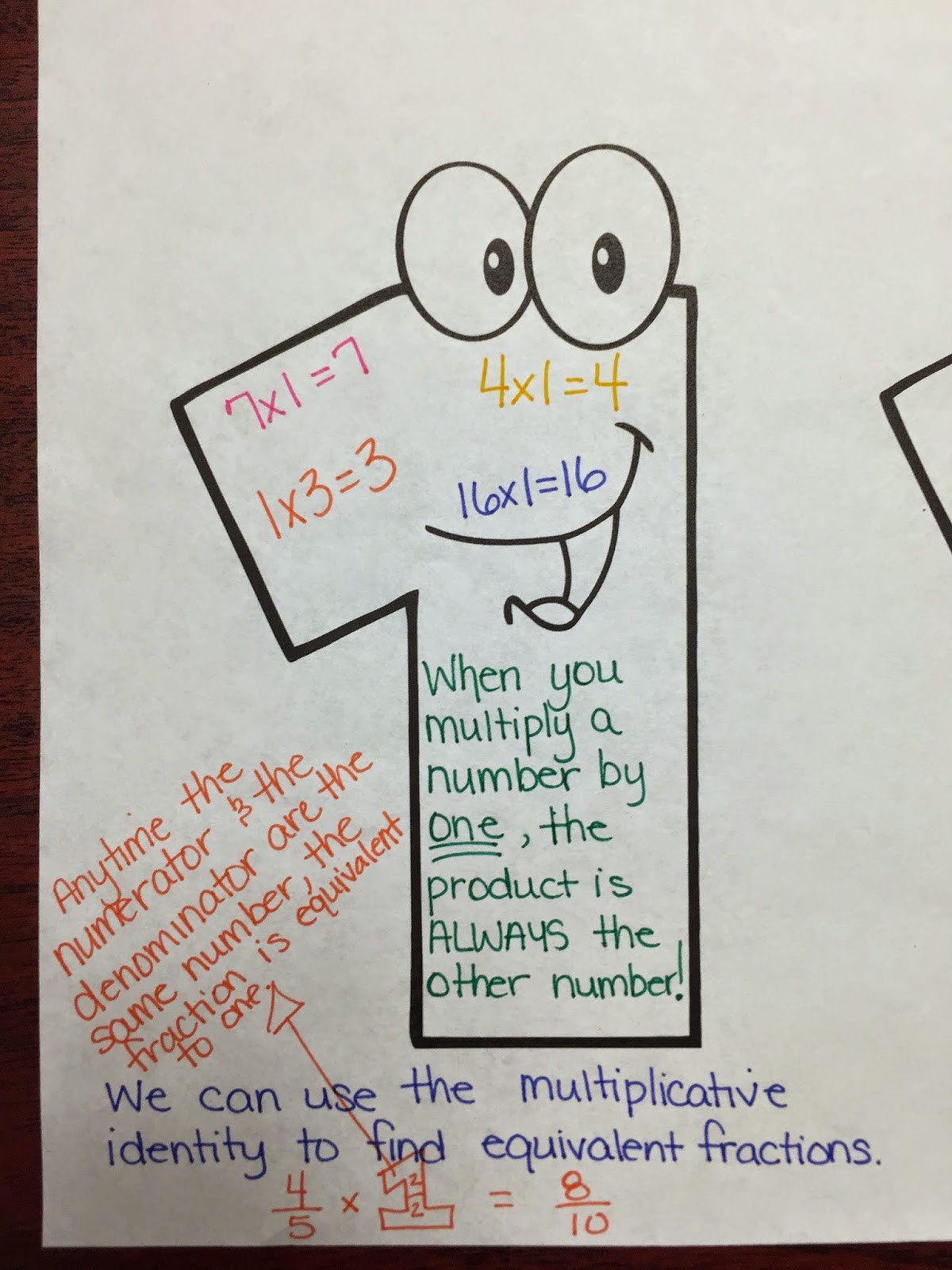
Epitome source: The Swish Instructor
3. Cover the multiplication tabular array, starting with the "easy" numbers
To review, your students should now empathise that multiplication can exist thought of equally repeated improver.
They should also have taken time to multiply numbers by goose egg and one. While they don't need to know the technical terms, students should understand how the zero property and identity belongings work.
Now, it's fourth dimension to take on ane of the biggest leaps: covering the multiplication tabular array.
One effective approach works every bit follows:
- Display a nautical chart or overhead slide of the 12 x 12 multiplication table. If you wish, supplement this with student copies of the multiplication nautical chart. If a 12 10 12 chart seems too overwhelming, perform the same procedure with a 10 x 10 multiplication nautical chart.
- Teach students how to use the chart and find products by following and matching the position of numbers using the vertical and horizontal axes.
- Now, talk about some of the patterns you tin notice in the chart. Offer students clues or hints. For example, notation how every multiple of ten ends in zero, and every multiple of five ends in zero or 5.
- Inquire students which facts are the easiest. For instance, the ones and tens are piece of cake. Now that you have discussed the "easy" multiplication facts -- and what it is that makes them easy -- eliminate them from the chart.
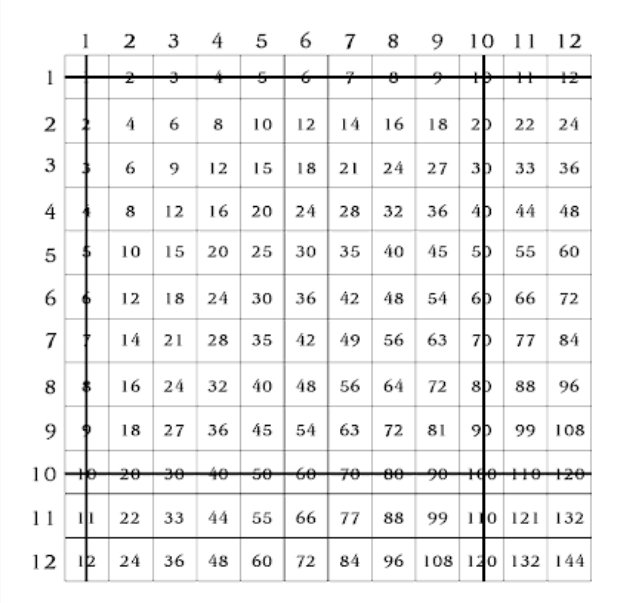
Students usually agree that the twos and fives and elevens are also easy. Go on crossing numbers the "piece of cake" numbers out, until you arrive at a phase that looks something like this:
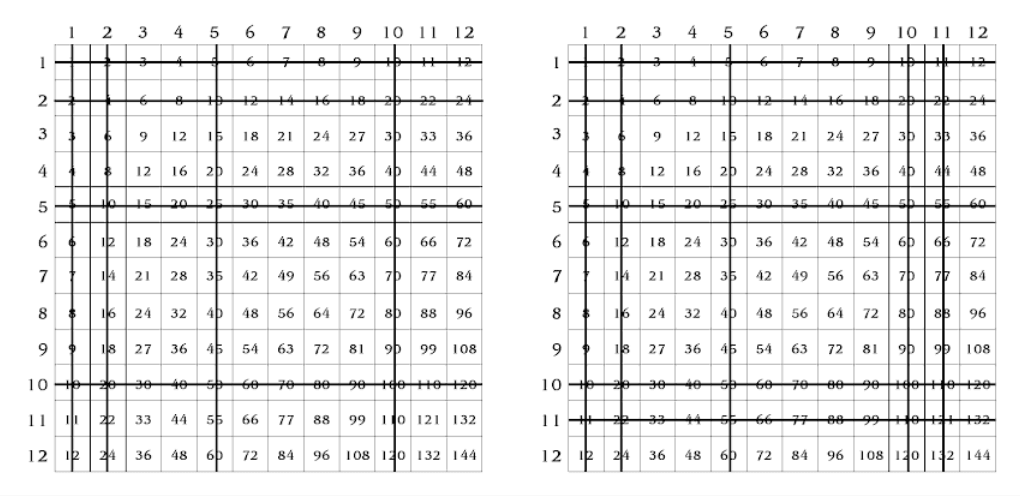
- Look at the remaining numbers with your class. Use the opportunity to lead a dynamic discussion and atomic number 82 into the side by side step.
4. Show how the commutative property makes things easier
Just similar add-on, multiplication is commutative, meaning the social club of factors doesn't alter the product (the reply).
In other words, two numbers can be multiplied in whatsoever guild, and the product volition be the aforementioned. For example, multiplying eight x 2 will give you the same answer as multiplying ii x 8.
When y'all communicate this effectively, it will encourage your students.
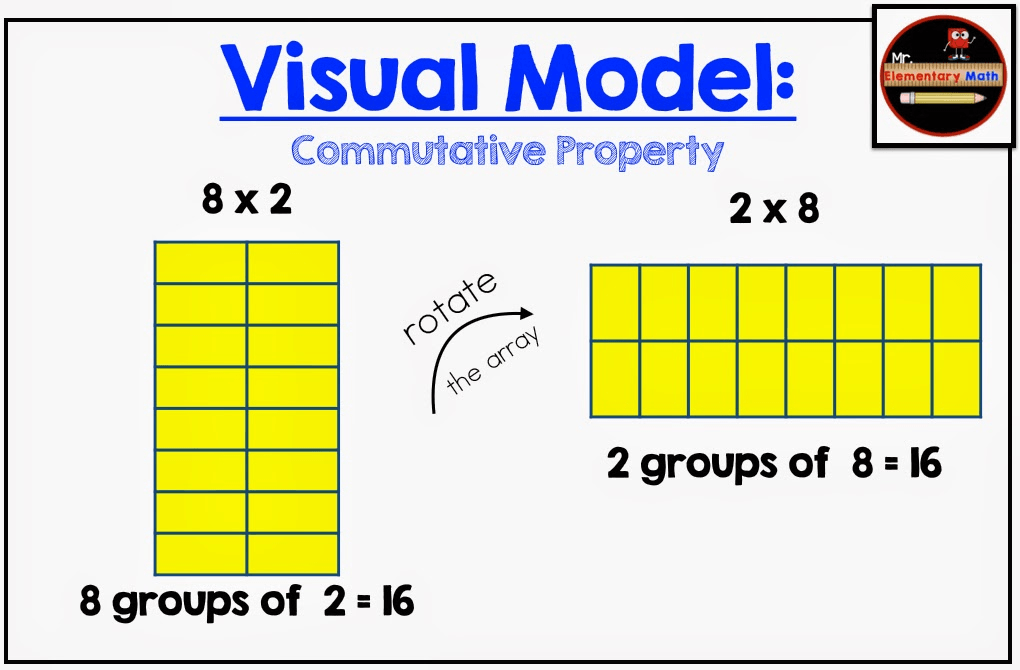
Bear witness your students that each answer repeats, and then they but have to larn half of the remaining tables. For instance, explain that learning 3 x 6 is the same as learning 6 x 3!
If students accept already learned the fact families of 0-3, so they besides know four numbers each of 4-10.
To farther reinforce the commutative property, yous tin also utilize a visual model like the ane above and point out how the yellow blocks are arranged.

Inquire your students, "aren't these 2 arrangements the same, but merely different versions of each other? If we count the total number of units, are they the aforementioned?"
Helping students grasp this property is a key part of teaching multiplication. To get students to practise it themselves and learn through direct experience, have your class create models to illustrate this idea, and prove that a x b results in the same product as b x a.
5. Interruption memorization downward into easy steps
At this signal, your students are ready to begin memorizing the multiplication table. It is likely that they have already begun to do then.
Exist aware that it is not always obvious to students why they need to learn multiplication facts off by heart. Communicate the importance of understanding the meaning behind multiplication facts and how they tin be used in everyday situations.

While at that place are many approaches to memorizing the multiplication chart, retrieve the examples to a higher place -- the "easy" numbers -- every bit a practiced starting point. As you continue your lesson, consider following these rules:
- Encourage studentsand prepare fourth dimension for them to practice verbally or in writing.
- Introduce new multiplication facts one past 1, gradually and incrementally opening the concept to the more than advanced steps of multiplying by two, 3, 4 and and then on.
- Requite students fourth dimension to practice the multiplication facts. Find a rhythm that works well in your classroom. If you wish, accept advantage of peer learning for students who are struggling.
- Memorize the facts in a strategic order. In one case your students principal0-iii, continue tofour-7, so8-10. Depending on your preference, y'all may too encompass 11 and 12. Including more challenging issues every bit a bonus will help you lot to approximate high-achieving students. Some teachers will include a few harder bug for a bonus or to identify high-achieving students.
To help with memorization, proceed visual materials on mitt in your classroom. No matter how many times you cover multiplication, it'south always a good idea to take a physical re-create of the table available in your classroom.
If you don't have one, you tin can order one online for less than 10 dollars. A quick search on Amazon shows an assortment of options.
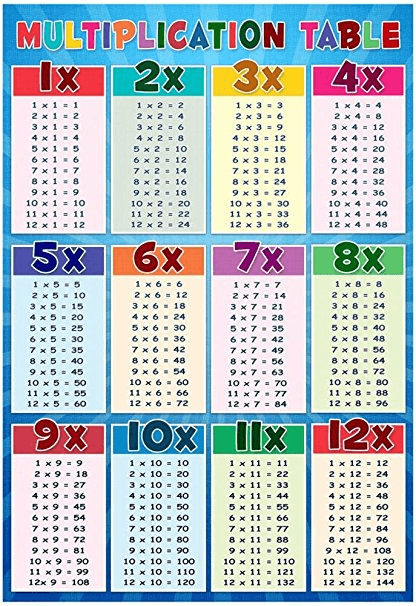
If you already have a poster, consider getting other materials that will assist you explain the function of multiplication visually.
For instance, this document is a great option for displays: it contains a twenty folio set of answers (similar the one seen beneath) to each of the times tables from 1-10, color coded according to the specific table they correspond.
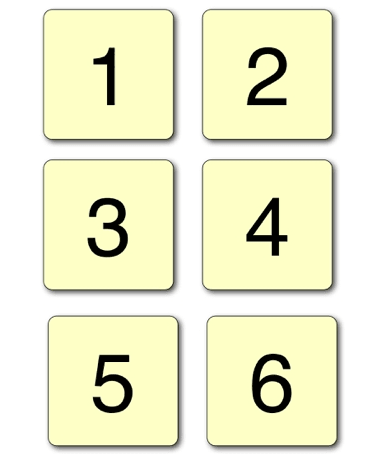
6. Introduce the associative and distributive properties
While these concepts are more advanced, it is important your students grasp them. You lot will find they can piece of work wonders to meliorate your students' mental math.
Note: Use your discretion when introducing the properties below. They may not be applicative to students in any year lower than the 4th Grade.
The associative belongings
The rule of associative property states that no matter the style y'all group factors, the production will always exist the same.
For example,
(a tenb) 10c = aten (b xc)
or
(1 x 2) x 3 =one x (2 ten three)
Your students can understand this concept by relating it to column addition, whereby they group addends to find the sum.
Students tin can also acquire to grouping factors in whatsoever manner they notice most convenient as they wait for the answer. You lot may explicate this rule as an extension of the commutative belongings in a higher place.

The distributive property
The distributive property is symbolized as a(b + c)=(ab)+(air-conditioning)
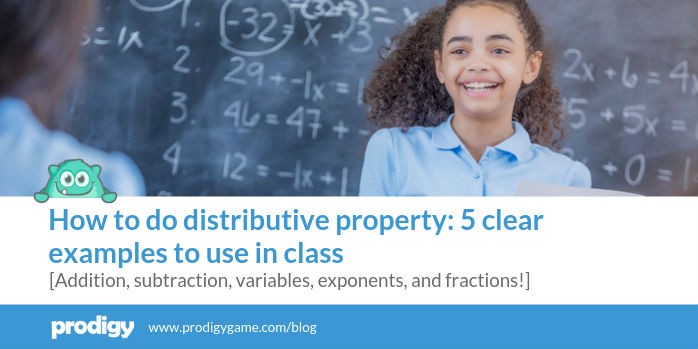
That might look tricky to students, only frequently they are already using the holding past themselves every bit a mental math trick to solve more challenging multiplication facts.
Put just, the property spreads out -- or, every bit its name implies, distributes -- the value of a equally to b and c.
For example, for half-dozen x 8, they may apply the distributive property to think: (6 x v) + (6 x 3), or 30 +18
To explain the property to visual or tactile learners, allow children to explore the distributive belongings with materials such as cups and beans or grid newspaper.
Section B: Fun ways to teach multiplication
Play Classroom Math Games
Classroom math games can have the fear out of multiplication. Consider these two examples specialized to multiplication:
Figurer Constants
If the calculators in your classroom have a constant function, encourage your students to use them to discover the multiples of whatever number to find the link between multiplication and addition.

How information technology works:
- Pick a factor such every bit seven, and enter information technology.
- Hit the + button, then press the = push. The reckoner should show seven once more.
- Next, keep to press the = button. The constant function volition continually add seven, showing the number's incremental multiples (7, 14, 21, 28, and and so on)
- Optionally, have students tape a list of the multiples they find and encourage them to look for patterns in the list they come with
Times Table Fizz
This is a fun math action to motivate your students, reinforcing their knowledge of the multiplication table.

Pace a)Pick a specific multiplication table to use for the activeness (for example, multiples of five)
Stride b) Take your students stand up and arrange them in a certain order, such that each educatee knows when information technology's their plough
Step c) Choose one student to count "i." Next, the child to his or her left counts "2." The following child counts "iii," and so on. When the sequence reaches a multiple of five, the student shouts out "buzz!"
Therefore, the sequence volition proceed equally: one, two, 3, four, "buzz!", 6, 7...
Step d) If a student forgets to say "fizz" or says it at the wrong time, they are out and sit down downwards. The counting sequence will keep until the students reach ten times v (or at the instructor'south discretion) and volition then showtime again.
The final winners are the terminal 3 children continuing. Consider rewarding the winners equally part of your classroom management strategy.
For more inspiration, review our full list of 20 engaging, skill-building classroom math games.
For an agile approach to instruction math, review our 20 fun and creative math activities -- approaches and exercises, with and without computers, that will brand students look frontwards to your math lessons.
Use fun math books in form
In our review of math books for students, we establish a list of exceptional resources for teachers.
Review numbers three, five, and half-dozen to find examples of publications that characteristic multiplication and assistance back up a well-structured math curriculum.
Support learning with math websites
The internet is habitation to a vast selection of powerful and useful educational math websites for teachers and students.
Run across our list of helpful math websites for teachers, five of which you tin can share with students.One resource is Prodigy Math Game, a curriculum-aligned math game used by more than 800,000 teachers and 30 one thousand thousand students around the globe.
Prodigy offers content from every major math topic — including multiplication — and covers 1st to 8th grade.
You tin can brand learning multiplication a fantasy-inspired journey where students' success depends on honing curriculum-aligned math skills!
How to Teach Multiplication: Final Thoughts
If multiplication is a science, then helping your students understand the operation is an fine art.
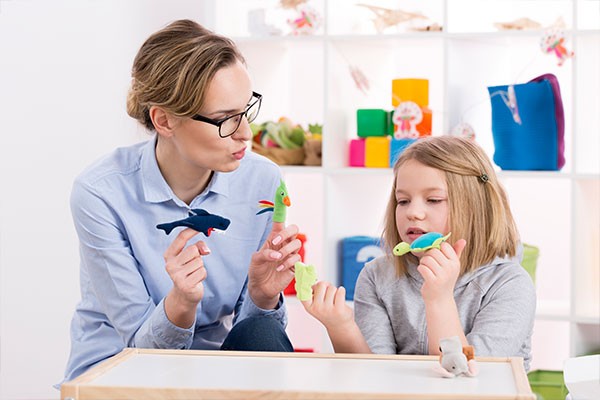
With these strategies and tools in listen, yous can come across how multiplication doesn't take to be a scary or daunting bailiwick -- for yourself or for your students.
When cleaved downwards into digestible constituents, you will avert the frustrations that frequently accompany the practise of learning multiplication.
Utilise these ideas to reinforce a well-structured math curriculum, and watch your students' learning outcomes improve.
Source: https://www.prodigygame.com/main-en/blog/how-to-teach-multiplication/
0 Response to "Glossary 1 Multiplication Properties Incorrect Try Again or"
Post a Comment